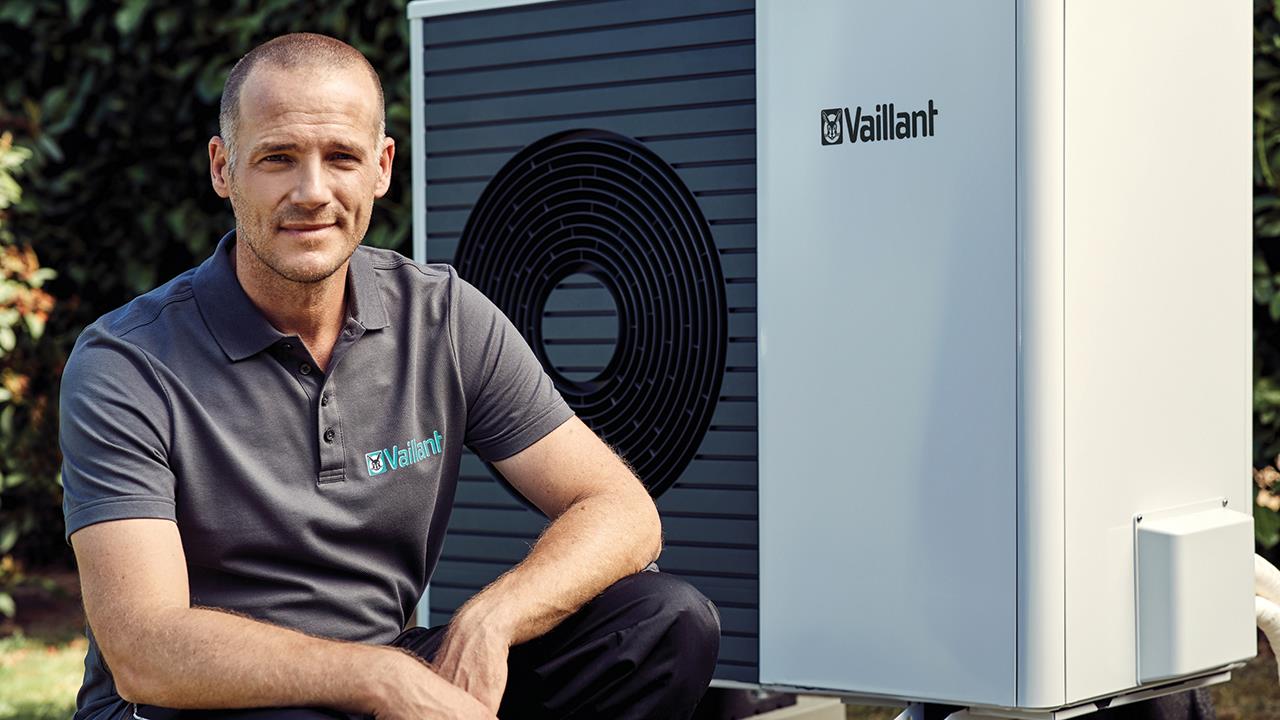

Craig Dolan, Product Manager – Renewable Systems at Valliant Group, explains what role heat pumps can play in reducing the carbon footprint of existing homes.
Delivering the government’s pledge of net-zero carbon by 2050 is a challenge for all areas of society. However, given that this equates to the installation of 1,700 heat pumps every day until 2050, and that a property’s heating and hot water alone account for 79% of total energy use, according to the European Commission, how we will sustainably heat homes in the future is an increasingly important question.
Although the government is already looking to decarbonise heat in new homes by increasing the level of energy efficiency they have to meet, how we should reduce our reliance on traditional forms of heating for existing homes also needs to be addressed.
No one size fits all, so various solutions are required depending on the type of building in question. But the delivery of renewable heating systems should be underpinned by a few basic considerations so that households can successfully make the transition to low carbon heating.
Lower the load
Whatever heating system is installed, it is vital to minimise the amount of heat required in the first place by improving the building fabric. That’s why, before embarking on an upgrade programme to install a new heating system, it’s important to understand how much heat is currently being wasted, and what measures are required to insulate the dwelling to reduce its heat demand. Not only would this insight help determine the best choice of heat source, but it would also ensure that all aspects of the heating system will be correctly sized.
Once a full heat loss calculation is completed and the health of the building’s fabric is understood, modern, sustainable technologies, such as air and ground source heat pumps (GSHPs), should be considered.
System specification
The type of system chosen depends on the space available. If a GSHP is being considered, the homeowner will need to carry out an online geological survey. This is because the network of pipes pumping the brine underground, called ground loops, can be fitted horizontally or vertically. Ground arrays are laid horizontally in a shallow trench over a wider surface area, whereas a vertical system buries the pipes in a borehole.
To help save costs, the owners may wish to retain their existing heating infrastructure where possible. For example, if a home has a low-level heat loss and currently uses a boiler fuelled by oil or liquid petroleum gas to heat a ‘wet’ system, it may be possible to use the existing piping and heat emitters – i.e. radiators. The full heat loss calculation will recommend the requirement of each room and whether emitter upgrades are required.
For properties using a ‘dry’ system, such as electric storage heaters, piping would need to be installed to carry heated water around the building if a heat pump is specified. When hot water is needed, a high recovery cylinder will be required to get the best performance.
Renewable ready
There are currently more than 125,000 Gas Safe-registered installers working in domestic gas boiler installations. In comparison, there are only just over 1,600 Microgeneration Certification Scheme (MCS) registered companies. This stark statistic shows that, in order for homeowners to successfully adopt renewable heating solutions for their properties, more installers are needed.
When discussing the matter at a recent industry forum, Howard Porter, Chief Executive of the British Electrotechnical and Allied Manufacturers’ Association, suggested that it is becoming more important for installers to widen their skills and knowledge so that they understand all aspects of energy usage in dwellings. Armed with this holistic view, installers could seize many more business opportunities.
With the Heat Pump Association highlighting that more than 8,000 additional installers are needed to meet the projected increase in heat pump installations over the next five years, it is important that existing installers look to upskill so they can take advantage of the opportunities offered by low-carbon systems.
Yet, while installers already hold many of the skills needed to install such systems, 74% of installers do not rate themselves as ‘very confident’ in choosing the best low-carbon options for their customers, according to the Sustainable Energy Association.
It is clear there is currently a gap in the industry when it comes to necessary additional training and qualification for low carbon systems.
If you'd like to keep up-to-date with the latest developments in the heating and plumbing industry, why not subscribe to our weekly newsletters? Just click the button below and you can ensure all the latest industry news and new product information lands in your inbox every week.